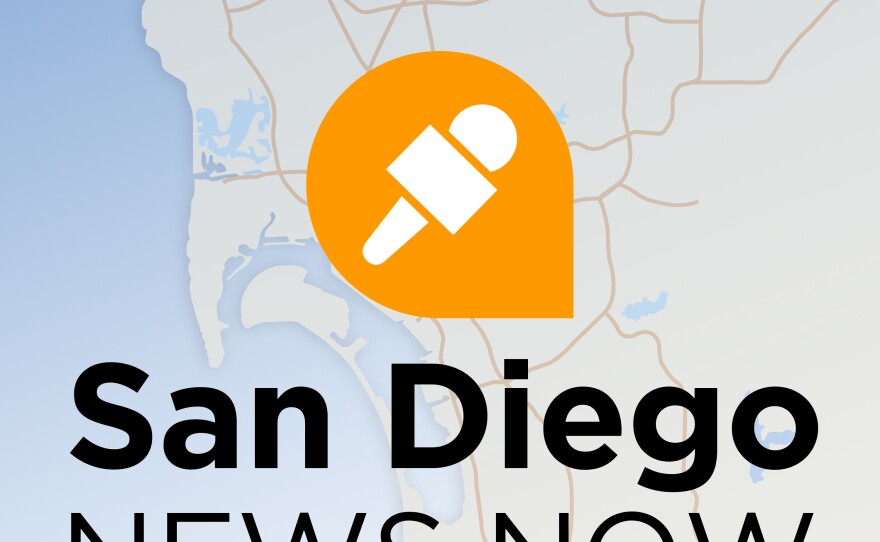Maria Hernandez has a stockpile of food in her pantry. She set some aside each month when receiving the additional COVID-19 emergency allotments to her CalFresh benefits — California’s “food stamps” program. She estimates the extra food will last two months for her and her 17-year-old daughter.
After that, she will do whatever it takes to ensure they survive — even if it means skipping some meals so her daughter has enough.
The emergency allotments, which gave every household the maximum benefit for their size, ended after February. The combined CalFresh benefits for Hernandez and her daughter dropped from $600 monthly to $160. Like more than 42 million other supplemental nutrition assistance recipients nationwide, Hernandez drastically cut her grocery budget.
The two live off a Section 8 housing voucher, Hernandez’s disability checks and their CalFresh assistance — a total income of about $1,600 per month, she said.
With the extra benefits, Hernandez used to buy fresh vegetables and lean meats. Now, she and her daughter eat what they can afford: ground beef, tuna fish, mac and cheese and Top Ramen.
Produce from food pantries often spoils within a day, she said.
This sudden nutritional change was reflected when Hernandez visited her doctor for her diabetes.
“My sugars were leveled, but now they’re going up and down again, ” she said.
She worries about her health, but processed foods are typically the cheapest. She works the sales but still has to dip into her savings by the end of the month to put food on the table. Each day, the stockpile in the pantry shrinks.
Hernandez said when she first heard of the change, she was scared not just for herself but others she knows. Hernandez volunteers as a representative of Resident United Network, an organization that works on affordable housing and homelessness and assists people who are getting out of prison.
Food insecurity can affect anyone, said Feeding San Diego spokesperson Carissa Casares.
“A lot of people think it's just unhoused,” Casares said. “It's not. It could be your neighbor; it could be your friend; it could be a colleague.”
The Hunger Coalition found that the end of the emergency allotments resulted in a loss of 7.7 million monthly meals in San Diego County.
Food banks, already strained by record food inflation and rising transportation costs, are reporting increased demand they’re unable to meet.
Casares said the emergency allotments are irreplaceable.
“There’s no solution to this, really,” she said. “This was a huge loss for our whole state, for the whole country, and food banks can't just simply come up with the replacement.”
Casares said her organization is struggling already with a decrease in donations since the pandemic: “It’s not seen as so much of a crisis anymore.”
Anahid Brakke, CEO of Hunger Coalition of San Diego, put the ongoing crisis into perspective.
“The loss of these emergency allotments is worse than if every single food bank and food pantry closed their doors,” she said.
CalFresh benefits have advantages over direct food distributors like food pantries: the dollars are spent locally, they’re accessible for those who can’t make it to a food bank, and they can be spent on foods appropriate to someone’s culture and diet.
But Brakke said many San Diegans who are eligible are not enrolled.
They may not realize that the income limit is double the federal poverty level, she said.
“They’re afraid to apply for CalFresh because they're worried that they'll be considered a public charge on the government and be looked on less favorably for citizenship,” Brakke said. “That is not true.”
The Senate last week passed a resolution to nullify the 2022 change that barred the Department of Homeland Security from considering the use of healthcare, nutrition, or housing programs in a lawful immigrant’s application for permanent residence.
The Senate’s resolution will head to the House for a vote by June, but the Biden administration has promised to veto it.
The 2022 ruling replaced a Trump-era policy that had a chilling effect on the use of nutrition assistance by eligible immigrants, many of whom canceled their benefits because they were afraid their visa would not be renewed, their citizenship would be denied, or an undocumented family member’s information would be shared with immigration enforcement.
Brakke said her organization saw legal permanent residents withdraw not just their enrollment in CalFresh but their children’s enrollment in the Free and Reduced Price Meal program and other nutrition programs.
The San Diego Hunger Coalition and others across the state have been advocating to extend CalFresh eligibility to all undocumented individuals through the Food4All campaign. California passed similar legislation for adults 55 and over in 2022.
Enrollment isn’t the only issue, Brakke said. Many San Diegans who are enrolled in CalFresh are not getting the maximum benefit for which they’re eligible.
She said the system is unnecessarily complicated — it requires internet access, technological savvy and advanced language proficiency.
If everyone who is eligible for CalFresh got the benefits, food banks could be used more strategically for people who are not eligible for federal nutrition programs, she said.
May is CalFresh awareness month, and Brakke and her team are encouraging San Diegans who do have that access to learn about the system so they can help others enroll.
She said no one should be embarrassed about seeking benefits.
“The numbers just don't work out when you look at the salaries and you look at the cost of living,” Brakke said. “So, it really isn't a sign of personal failing. This is really an equity issue.”
Brakke and other advocates are eyeing a piece of legislation that, if approved, would increase the monthly minimum CalFresh benefits from $23 per month to $50.
It’s an increase almost big enough to cover a gallon of milk and a dozen eggs each week.
Even before the pandemic, New Jersey went beyond the federal minimum to $50 per month. And it has already passed an increase to $95 per month to offset the end of emergency benefits during a time of record grocery prices.
Massachusetts passed a temporary increase as an “offramp” to the COVID-era benefits.
Other states have similar bills under debate.
Meanwhile, Hernandez’s stockpile is running out.
-
It's been more than two months since the COVID emergency food benefits ended in California, and some San Diegans continue to face food insecurities.
-
We can make many changes at home and in our daily lives to protect our climate. But where do we start?







